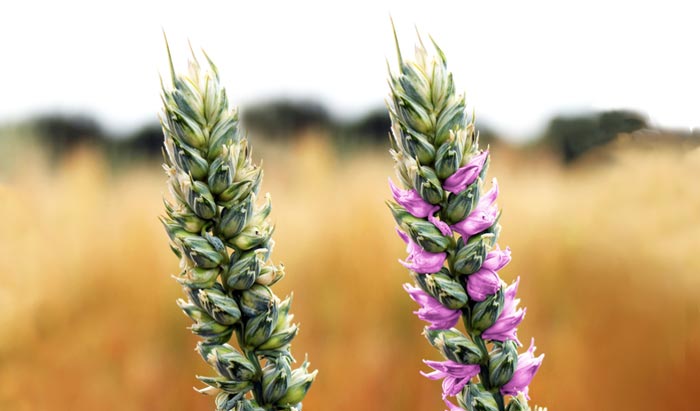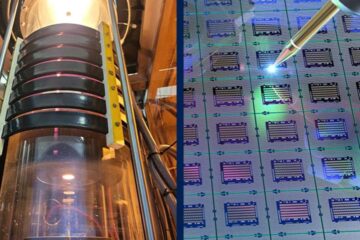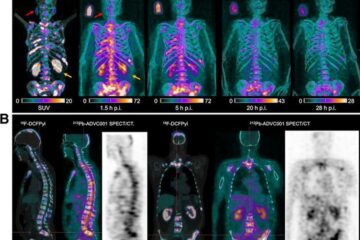Higher wheat yields and protein content on the horizon

The new wheat line growing in the field. The wheat on the right has the extra flower-bearing spikelets artificially highlighted in pink to show their extent.
Credit: University of Adelaide
A team of international researchers has discovered a way to produce higher quality wheat. The scientists from the University of Adelaide and the UK’s John Innes Centre have identified a genetic driver that improves yield traits in wheat, which unexpectedly can also lead to increasing protein content by up to 25 per cent.
“Little is known about the mechanism behind drivers of yields and protein content in wheat production,” said the University of Adelaide’s Dr Scott Boden, School of Agriculture, Food and Wine who led the research.
“Discovering a gene that controls these two factors has the potential to help generate new wheat varieties that produce higher quality grain.
“As wheat accounts for nearly 20 per cent of protein consumed worldwide, the impact of this research can significantly benefit society by providing grains with a higher protein content, which could therefore help produce more nutritious food, such as bread and breakfast cereals.”
The work is the first known example where a forward-genetics screen of a mutant population has been used to identify a gene that controls reproductive development in wheat and insights from this research has the potential to help improve the nutritional and economic value of wheat.
“The genetic variation we identified provides a 15-25 per cent increase in protein content for plants grown in the field. These varieties also produce extra spikelets, known as paired spikelets,” said Dr Boden.
“We have not yet detected an increase in yield with the extra spikelets, but we hope a yield increase might come in elite varieties grown by farmers.
“The increase in protein content occurs without the trade-off of a reduced yield so this discovery has even better potential to provide economic benefit to breeders and growers than just the increased nutritional value by itself.
“Aside from the important outcome of this work for the future of wheat breeding, the research itself is of immense value to the scientific community as it provides an elegant example of new capabilities that are available to wheat research.”
The team expects that the new wheat varieties will be available to breeders in 2–3 years’ time, which could then translate to benefits for farmers in 7–10 years’ time.
The team’s findings were published in the journal Science Advances.
This project was funded by the Royal Society (UK), the Biological and Biotechnology Sciences Research Council (UK), the Australian Research Council (ARC), the South Australian Grain Industry Trust (SAGIT) and the University of Adelaide’s Waite Research Institute.
Journal: Science Advances
DOI: 10.1126/sciadv.abn5907
Method of Research: Commentary/editorial
Subject of Research: Not applicable
Article Title: MicroRNA-resistant alleles of HOMEOBOX DOMAIN-2 modify inflorescence branching and increase grain protein content of wheat
Article Publication Date: 11-May-2022
All latest news from the category: Agricultural and Forestry Science
Newest articles

Silicon Carbide Innovation Alliance to drive industrial-scale semiconductor work
Known for its ability to withstand extreme environments and high voltages, silicon carbide (SiC) is a semiconducting material made up of silicon and carbon atoms arranged into crystals that is…

New SPECT/CT technique shows impressive biomarker identification
…offers increased access for prostate cancer patients. A novel SPECT/CT acquisition method can accurately detect radiopharmaceutical biodistribution in a convenient manner for prostate cancer patients, opening the door for more…

How 3D printers can give robots a soft touch
Soft skin coverings and touch sensors have emerged as a promising feature for robots that are both safer and more intuitive for human interaction, but they are expensive and difficult…





















